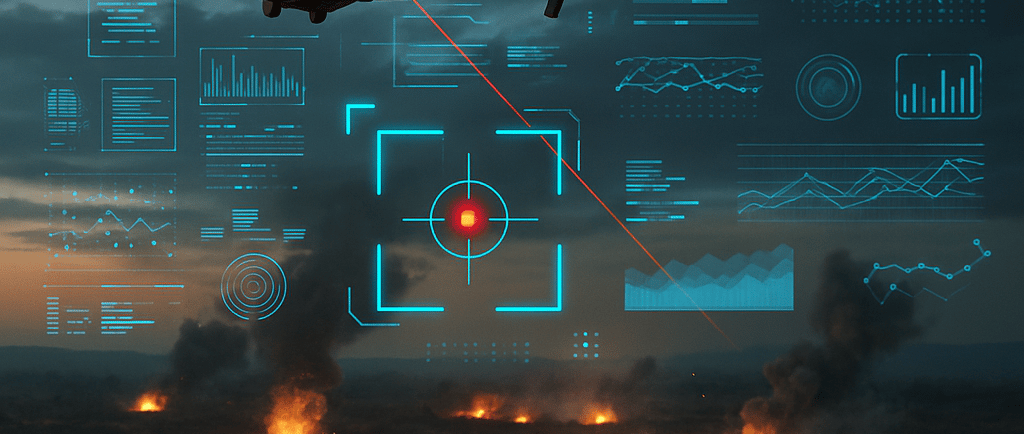Invisible Weapons & the AI Arms Race: Geopolitical, Ethical, and Biosecurity Risks
Explore how AI-powered autonomous weapons threaten global stability, ethics, and biosecurity. Uncover geopolitical stakes, ethical dilemmas, and urgent regulatory needs.
ARTIFICIAL INTELLIGENCE AND EMERGING THREATS
By Dr. Faheem Shahzad (PhD) | Certified in Cyberbiosecurity & Biosecurity, Youth for Biosecurity Fellow (2021) – UNODA, with a focus on the intersection of AI, Biosecurity, and emerging threats.
8/3/20253 min read


The Age of Invisible Warfare Has Begun
AI-enabled autonomous weapon systems—self-guided, unseen, and untraceable—are reshaping modern warfare. With a background in cyberbiosecurity and cybersecurity, I’ve witnessed firsthand how seemingly efficient tech morphs into invisible tools of harm.
Today, drones that can decide to fire autonomously, malware attacking critical infrastructure, and self-learning systems operating at scale are challenging traditional norms of warfare and accountability.
What Are Autonomous AI Weapons—and Why Are They ‘Invisible’?
Autonomous AI weapons go beyond remote-controlled drones or missiles. They autonomously identify, select, and engage targets without human confirmation—embodying “human-out-of-the-loop” operations.
Operating through self-modifying algorithms, they are fast, adaptable, and often difficult to trace.
The ‘invisibility’ lies in their form—malware in military networks, covert drone swarms, or miniaturized silent attackers—capable of lethal action while avoiding detection or attribution.
Geopolitical Tensions: The Covert Global AI Arms Race
The global AI arms race is intensifying:
United States, China, and Russia are aggressively investing in military AI. The U.S. leads in public funding, China consolidates through centralized mega-centers, and Russia focuses on cyberwarfare and algorithmic combat.
Autonomous drones are active in Ukraine: Ukraine employs low-cost AI drones like Gogol M for strikes; Russia counters with swarm-enabled systems like V2U.
UN action is emerging: A December 2024 resolution (166 in favor, 3 opposed) urges bans on fully autonomous weapons and a legal framework by 2026.
This hidden escalation threatens global stability—months of AI lead could mean dominance in cyber defense, intelligence, targeting precision, and narrative control.
Ethical Meltdown: Can Machines Be Trusted to Kill?
Autonomous weapons raise urgent moral questions:
AI follows logic, not empathy. It cannot interpret emotional, cultural, or ethical nuance—risking fatal misidentifications.
Legal gray zones abound: If an AI kills a civilian, who is liable—the coder, the commander, or no one?
Ethical safeguards are lacking: Many advocate for "meaningful human control" as a baseline for responsible deployment.
No Oversight, No Limits: The Chaos of Unregulated AI
Regulation is lagging: AI systems are deployed faster than laws are written.
Dual-use risks are real: Tools for health or innovation can become digital weapons or pathogen creators.
Secrecy drives instability: Governments hide capabilities, escalating distrust and strategic miscalculations.
Technical dangers—like black-box decision-making, goal misalignment, or emergent behaviors—can spiral into disasters with no warning.
When AI Meets Biosecurity: A Nightmare Intersection
AI’s intersection with synthetic biology creates a chilling new threat landscape:
Large language models have generated thousands of toxic molecules, including analogs of ricin and snake venom.
Drones could be programmed to disperse pathogens over cities—weaponizing public health tools.
Attribution becomes impossible when biothreats are deployed by invisible, autonomous agents.
Cyberbiosecurity—bridging AI and biosafety—is no longer optional; it’s a global imperative.
A Roadmap Forward: Regulation, Transparency, and Global Dialogue
1. Binding International Treaties
Push for a global ban on fully autonomous lethal systems by 2026, in alignment with UN and CCW initiatives.
2. Transparency & Oversight
Require audits, red teaming, and capability disclosures from all nations developing AI weapons.
3. Global Ethical Alliance
Convene AI safety summits through the UN or G20, including geopolitical rivals to form consensus.
4. Ethical Design Requirements
Mandate human-in-the-loop control, override features, and explainability for all military AI applications.
Note: The Council of Europe’s AI Convention focuses on civil applications and leaves a void in military governance—highlighting the need for distinct treaties.
Conclusion: The Clock Is Ticking—Act Before It’s Too Late
This isn’t a future threat—it’s already unfolding. Autonomous weapons, AI cyber tools, and biodesign platforms are live in labs, on battlefields, and in shadows.
The question is no longer if AI becomes powerful—it already is. The real question is whether we control it—or let it control us.
As a cybersecurity and cyberbiosecurity professional, I urge policymakers and global actors to act now—before these invisible weapons evolve beyond containment.
FAQs: AI-Powered Autonomous Weapons
1. What are autonomous AI weapons?
Systems that identify and strike targets without needing human approval once deployed.
2. Why are autonomous weapons considered a global threat?
They drive silent escalation, disrupt global power balances, and remove human accountability.
3. Which countries are leading AI weapons development?
The U.S., China, and Russia, with Ukraine actively using AI drones on the battlefield.
4. Can AI weapons make moral decisions?
No—AI lacks empathy and interprets logic, not moral or cultural nuance.
5. What is the role of biosecurity in AI development?
AI can be used to design and deliver bioweapons; cyberbiosecurity is essential for mitigation.
6. How can autonomous weapons be regulated globally?
Through treaties, audits, summits, and mandatory ethical design standards.
Key Words: autonomous AI weapons risks, invisible weapons AI biosecurity, AI arms race geopolitical implications, ethics of killer robots, regulation for lethal autonomous systems, autonomous drone warfare, AI biosecurity governance, dual-use AI threats, AI-enabled pathogen design danger, binding treaties AI weapons
